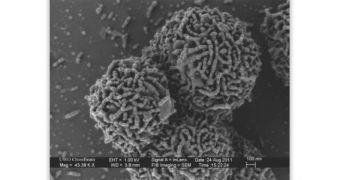Life can and does survive in extreme places on Earth and plenty of scientists are very interested in finding out just how much an organism can take
For many, the goal is simple, if life can survive in extreme places on Earth, it may very well survive in extreme but similar places in the solar system and beyond.
Researchers have found a new type of bacteria, Planococcus halocryophilus strain Or1, in the frozen Canadian Arctic that lives in the extremely cold permafrost. Temperatures around it are typically at about -15 degrees Celsius, or 5 degrees Fahrenheit.
While the mixture of ground and ice, the permafrost, around it is, as the name suggest, permanently frozen, there are veins of salty liquid water inside and that's where the bacteria lives, not just surviving, but actively growing and dividing.
The bacteria can continue to function at temperatures of -25 degrees Celsius, or -13 degrees Fahrenheit.
To be able to withstand these conditions, the bacteria suffered quite a few modifications meant to protect it both from the cold and the very salty water.
The conditions in the Canadian permafrost are comparable, in some aspects, with conditions on Mars or Saturn's largest moons.

 14 DAY TRIAL //
14 DAY TRIAL //